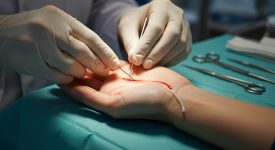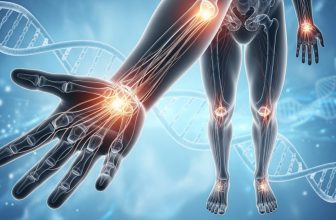
5 Reasons Needle Aponeurotomy for Dupuytren’s Is a Game-Changing, Minimally Invasive Option
Introduction
For patients seeking a quicker and less invasive option than open surgery, needle aponeurotomy (also called percutaneous fasciotomy) has become an increasingly popular choice. It can be performed in a doctor’s office under local anesthetic and offers almost immediate improvement in finger extension for many people with Dupuytren’s contracture.
How the Procedure Works
A thin needle is inserted through the skin at multiple points along the fibrous cord. The surgeon uses gentle sawing motions to weaken the tissue until the finger straightens. Because no incision is made, the skin heals within days, and the procedure rarely requires stitches or a hospital stay.
Who Is a Good Candidate?
Needle aponeurotomy is best for patients in the early to moderate stages of contracture — especially when cords are palpable but the joints remain flexible. It is commonly recommended for those who cannot take extended time off work or who want to avoid general anesthesia.
Benefits
- Minimally invasive: No large incision or stitches.
- Fast recovery: Most patients resume light activities within days.
- Low cost: Usually done under local anesthetic in a clinic.
- Repeatable: Can be performed again if cords reform.
- Low risk: Few serious complications when done by experienced hands.
Patients often report instant improvement in finger mobility and grip strength. Because the procedure is so quick, it can be an excellent option for older patients or those with medical conditions that make surgery riskier. (External link: Mayo Clinic Dupuytren’s Treatments)
Risks and Limitations
While needle aponeurotomy has many advantages, it also has limitations. Because the fibrotic tissue remains in place, recurrence rates are higher than with fasciectomy. Studies show that 40–60% of patients develop some degree of re-contracture within 3–5 years. Minor side effects such as skin tears, soreness, or temporary tingling may occur. Permanent nerve damage is rare but possible if the needle is inserted too deeply.
Aftercare and Rehabilitation
Most patients need little to no downtime after the procedure. However, hand therapy is essential to maintain extension and prevent re-tightening. A therapist may recommend:
- Gentle stretching exercises twice daily.
- Night splints for four to six weeks.
- Massage to reduce scar adhesion.
With consistent therapy, many patients retain improved motion for years. Those with aggressive or recurrent disease may combine needle aponeurotomy with enzyme therapy to improve results.
Comparing to Surgery
Compared to fasciectomy or dermofasciectomy, needle aponeurotomy is less invasive but less durable. Surgery physically removes the fibrotic tissue and offers lower recurrence, while needle release simply divides it. Choosing the right approach depends on the stage of disease, overall health, and patient goals. (Johns Hopkins Medicine)
What the Science Says
In a 2011 study published in the Journal of Hand Surgery (European Volume), researchers found that 88% of patients achieved immediate improvement in extension. Recurrence was common but manageable with follow-up treatment. A later review confirmed that combining needle release with splinting and therapy produces better long-term results. (PMC Study Link)
Patient Tips
- Schedule therapy within a few days after procedure.
- Use a night splint as directed for at least four weeks.
- Massage the hand daily to prevent stiffness.
- Monitor for new nodules or tightness and follow up early.
Key Takeaways
- Quick procedure: Done in under 30 minutes.
- Low downtime: Return to activities in days.
- High recurrence: Expect possible re-tightening over time.
- Therapy is essential: Splint and exercise prolong results.
Best for mild cases: Ideal for those not ready for open surgery.
Connect with our Dupuytren’s community for support and real-world tips: facebook.com/groups/dupuytrenssolutionsandhealth. Discover my journey in Dupuytren’s Solutions and learn about all treatments — conventional, alternative, root-cause therapies, and remission strategies — at dupuytrenssolutions.com.
Attribution: (CC BY 3.0) Adapted from Foucher G et al. Percutaneous Needle Aponeurotomy for Dupuytren’s Contracture: A Ten-Year Review. J Hand Surg Eur 2011; 36(7): 548–554. Licensed under Creative Commons Attribution 3.0. For the complete article and reference list, click Source.
Legal & Medical Disclaimer: This content is for informational and educational purposes only and is not a substitute for professional medical advice, diagnosis, or treatment. Always consult your healthcare provider about any medical concerns or treatment options. Dupuytren’s Solutions is an educational resource meant to be used alongside, not instead of, professional medical care, and individual results may vary.






